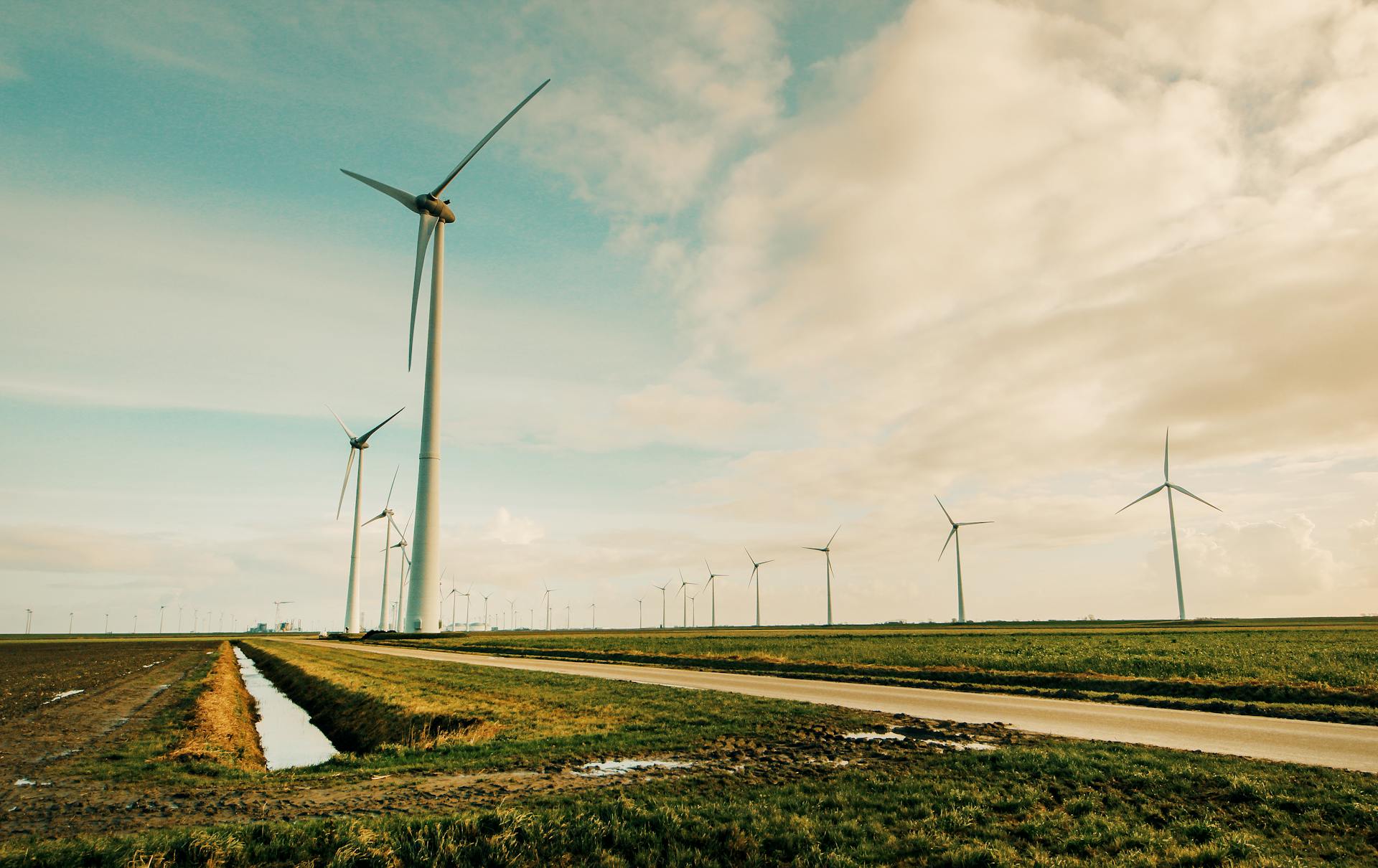While in middle school, Dakota Carter saw giant windmills being built near his home in Delavan, Illinois. He was amazed by how much electricity they could produce – enough to power 35,000 houses.
“I’ve always been passionate about the environment,” Carter said. “So I thought a career in wind could actually make a difference.” Fast forward to today, and Carter, now 29, is the boss overseeing operations at the Rail Splitter Wind Farm, where he grew up in Delavan.
EDP Renewables North America owns the wind farm. Carter’s journey began in 2017 as an intern, and after working as a wind technician, he’s been climbing the ranks for the past seven years.
Is a Wind Turbine Technician Career Right for You?
Carter got into wind turbine repair at a perfect time. Federal data suggests that it is the fastest-growing job in the US, along with being a nurse practitioner. Even though the number of new jobs isn’t huge, they’re expected to jump 45 percent by 2032, which is more than any other job.
Job boards like Indeed reported (via Business Insider) a surge of 30 percent in wind turbine technician listings just in 2023. That high demand is expected to continue. The government predicts around 1,800 new job openings yearly for the next ten years.
And it’s not just the US hiring – worldwide, there could be up to 240,000 new technician jobs by 2027 in places like China, India, and Brazil. Many countries are racing to build wind farms on land and out at sea. They’re doing this to switch to cleaner energy sources and fight climate change.
The International Energy Agency says the world must build many more wind farms yearly to reach net-zero emissions by 2050. That means adding about 17% more wind power to the world’s electricity grids annually. In the US, they’re aiming to add 11% more wind power capacity from 2023 to 2025.
The UK used to be the world champion of wind power, but China recently took the lead. In 2022, half of all new wind farms built globally were in China. The US is playing catch-up, and a new law called the Inflation Reduction Act is helping.
This law gives big tax breaks to companies that build renewable energy projects, especially if they pay their workers good wages. Currently, most wind turbine technician jobs in the US are on land in states with lots of wind, such as Texas, New Mexico, Kansas, and Colorado.
How Much Do Wind Turbine Technicians Make?
The first big offshore wind farms just started operating off the New York and Massachusetts coasts. Last year, wind turbine technicians typically made around $62,000, but job listings on Indeed showed an average salary closer to $80,100.
Harry Willats, an executive consultant at Darwin Recruitment, told BI that these jobs typically start at around $20 to $25 per hour. The more experience and training you have, the more you can make. Technicians with special skills can earn close to $50 an hour.
Working on wind farms at sea usually pays more – expect 30 percent to 40 percent extra compared to working on the land. You might also get offered overtime work. And if you move up to a supervisor role, you’ll likely switch to a yearly salary.
Government numbers show the average pay for wind turbine technicians in the US was close to $30 an hour in 2023, which comes to around $62,000 annually.
There are a few ways to get started in wind turbine technician jobs, according to Willats. Most people take a one-year electrical program at a local college and then land an apprenticeship. If you’re interested in working on offshore wind farms, you’ll need extra training from the Global Wind Organization in safety, first aid, and sea survival.
Learning keeps happening on the job! New wind turbine technicians often start with regular maintenance and cleaning tasks. As they gain experience, they’ll tackle more complicated problems, fix things themselves, and lead teams.
Willats says the technicians who make the most money typically have certificates for working with specific equipment brands, like Siemens Gamesa or GE. “The biggest con is pretty obvious: the weather,” Carter said. “You’re working in the heat or the cold, and you’re high up in the air. That can be pretty brutal. It’s also a very physical job.”
Wind farms play a key role in reducing greenhouse gases. Still, a recent study by climate change researchers at the University of Colorado at Boulder suggests they might be getting less efficient at generating power. This is an area of ongoing research, and scientists are looking for solutions.
It’s important to note that some researchers are studying ways wind farms can become even more efficient at generating power. While future developments are uncertain, the wind industry is constantly innovating. Regardless, there are many exciting and well-paying careers in renewable energy, and wind turbine technician is just one option to explore.

